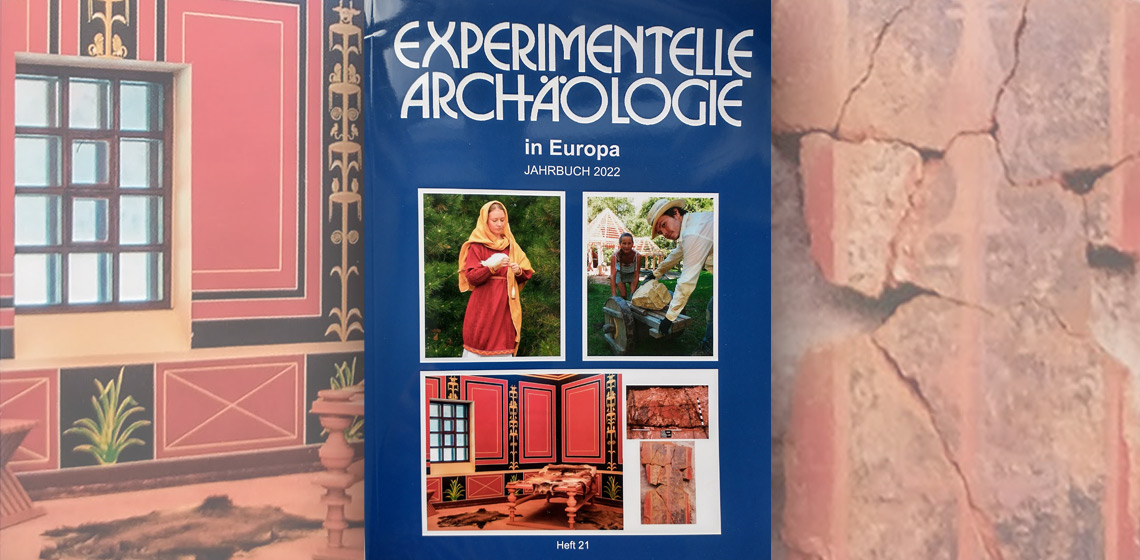The content is published under a Creative Commons Attribution Non-Commercial 4.0 License.
Unreviewed Mixed Matters Article:
Book Review: Experimentelle Archäologie in Europa, Jahrbuch 2022

The periodical is published by Gunter Schöbel and the European Association for the Advancement of Archaeology by Experiment e. V. (Europäische Vereinigung zur Förderung der Experimentellen Archäologie) in collaboration with the Pfahlbaummuseum Unterhuldingen.
This edition consists of 14 essays over 209 pages, originally presented at the EXARC conference held in 2021. The annual report (p.203) and the instructions for authors (p.207) of Experimentelle Archäologie in Europa are provided at the end of the periodical. As always, the periodical is divided into three parts: Experiment und Versuch (Experiment and Attempt, pp.11-72), Rekonstruierende Archäologie (Reconstructing Archaeology, pp.73-128) and Vermittlung und Theorie (Education and Theory, pp.129-157). This year there is a fourth section referring to the EXAR Project (pp.161-198) containing three articles.
The periodical consists of several great experiments, tackling questions from different time periods as well as topics.
For example:
How did Antiquity smell? (Wie roch die Antike? Ein Ansatz zur Rekonstruktion der antiken Geruchswelt durch die Herstellung antiker Duftstoffe. Ein Kooperationsprojekt zwischen der Alten Geschichte und Chemie an der Universität Hambug by Justine Diemke, p.31). This is a cooperation between the Department of Ancient History and the Department of Chemistry at the University of Hamburg. The interdisciplinary approach brings two departments together and by putting their expertise together, they investigated the idea of reconstructing and looking into how ancient – mostly Ancient Greek and Ancient Roman - perfumes and smells were made as authentically as possible. The paper is presenting the first results of the project. One result was that the intensity of the smells varies depending on which basis for the perfume was used.
Another paper looked into whether stirrups proved to be more effective when thrusting with a spear (Versuch your Effektivität der Nutzung von Steigbügeln beim Stoß mit einer scharfen Lanze by Lisa Marieke Kyre, p.51). The authors carried out practical trials – using the same experienced team of horse and rider – who repeatedly rode towards a target and projected the spear at full power. The depth of penetration was measured after each run. So far, no statistical difference between runs with or without stirrups could be found.
Under the Reconstruction section, Bettina Birkenhagen invites the reader to travel through time using the Roman Villa in Borg (Die Römische Villa Borg – Von der Ausgrabung your Rekonstruktion by Bettina Birkenhagen, p.83). The villa has been excavated and researched now for over thirty years and one of the main goals is the reconstruction of “the Roman lifestyle as faithfully and authentically as possible.” Birkenhagen investigates how the excavation reports and finds added value to how the villa was reconstructed. The author also compares the finds and reports with the finished reconstruction of the villa. She even goes so far as to speak of “model” instead of reconstruction (p.87) and that it is impossible to tell whether the villa really looked the way it does now. Nevertheless, the work done at the Roman Villa Borg offers a great insight into Roman life at a villa that included Roman baths, kitchen and outside workspace.
Another article – under the section Education and Theory – looks at an early medieval channel heating system and its possible function (Ein Versuch, aus den Resten einer frühmittelalterlichen Kanalheizung durch experimentelle Berechnungen deren ursprüngliches Aussehen zu rekonstruieren und ihre mögliche Funktion und Heizleistung zu überprüfen, by Hannes Lehar, p.145). There are channels running through some of the rooms at the cloister Mittelzell – situated at Lake Constance – that hint towards the Roman hypocaust system being known and maybe even used at the cloister. The idea was to reconstruct the channel heating in these rooms to see whether they could have functioned.
The last article in the periodical is the obituary for Anne Reichert (the periodical also includes one of her last articles Versuch der Rekonstruktion eines bandkeramischen Schöpfbeutels aus Lindenrinde, p.75), written by Gunter Schöbel.
All in all, the periodical provides a broad overview of experimental archaeology and offers a nice overview of various subjects within the field. It presents studies and experiments that were carried out with a passion for both archaeology and history.
Book information:
Schöbel, Gunter (ed.), 2022. Experimentelle Archäologie in Europa, Jahrbuch 2022, Heft 21, Unteruhldingen: Gunter Schöbel & Europäische Vereinigung zur Förderung der Experimentellen Archäologie e.V. European Association for the advancement of archaeology by experiment, ISBN: 978-3-944255 – 20-0.
Keywords
Country
- Germany

